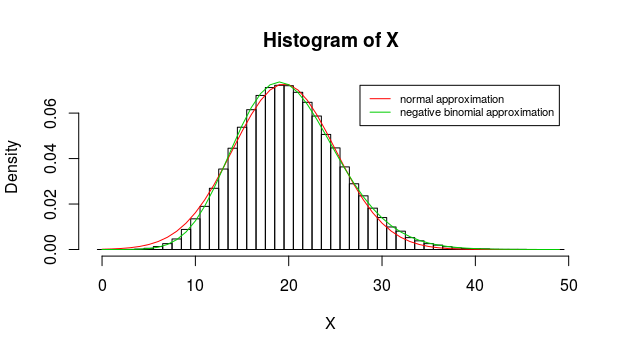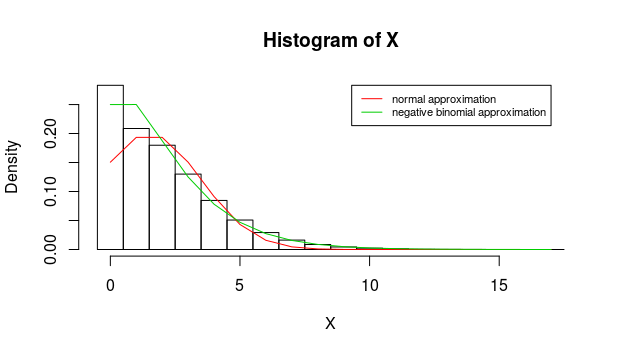What is the distribution of $X$ if $$ X \sim \text{Poisson}(\lambda), \quad \text{where }\lambda \sim N(\mu,\sigma^2)$$
or
$$ X \sim \text{Poisson} (\lambda), \quad \text{where }\lambda \sim Bin(n,p) $$ where $n$ is very large.
Detail and motivation
In biology, next-generation sequencing is often used to quantify the level of RNA in a cell. The experiment goes like this:
Imagine that a cell (or a extract made from many cells), is a mixed bag of 200,000 RNAs molecules from 20,000 classes. We wish to estimate the proportions of the various classes.
For each replicate of an experiment we sample, with replacement, RNA "reads" from the bag.
For a class of RNA we get a count of "reads".
Each replicate of an experiment is performed with RNA from a different cell (or an extract from a different group of many cells), drawn from the same underlying population of cells.
If X is the count of "reads" from a particular replicate of the experiment, in practice we often model X as being negatively binomial as when we look at it, it looks like an overdispersed poisson.
There has been some discussion recently if their is any theoretical basis behind using the negative bionomial other than "it seems to fit". One obvious answer is that the negative binomial is the result of a poisson distribution where the poisson rate follows a gamma distribution. One interpretation is that our measurement error is poisson (counts from a sample), and the underlying variance between biological samples is gamma. But why gamma: it does not seem like an obvious answer as to the distribution to use.
A model that we are more used to might be that the amount of RNA in a sample is normally distributed (or equivalently binomially distributed with large n).
Previous attempts
I'm sure I've seen this written down somewhere before, using PGFs to figure out the result.
$$\Pi_x(s) = \sum_x{P(X=x)s^x}$$
$$P(X=x) = \int_r{P(X=x|\lambda=r)P(\lambda=r)}$$
but writing this down has only resulted in an intergral I don't know how to solve!


